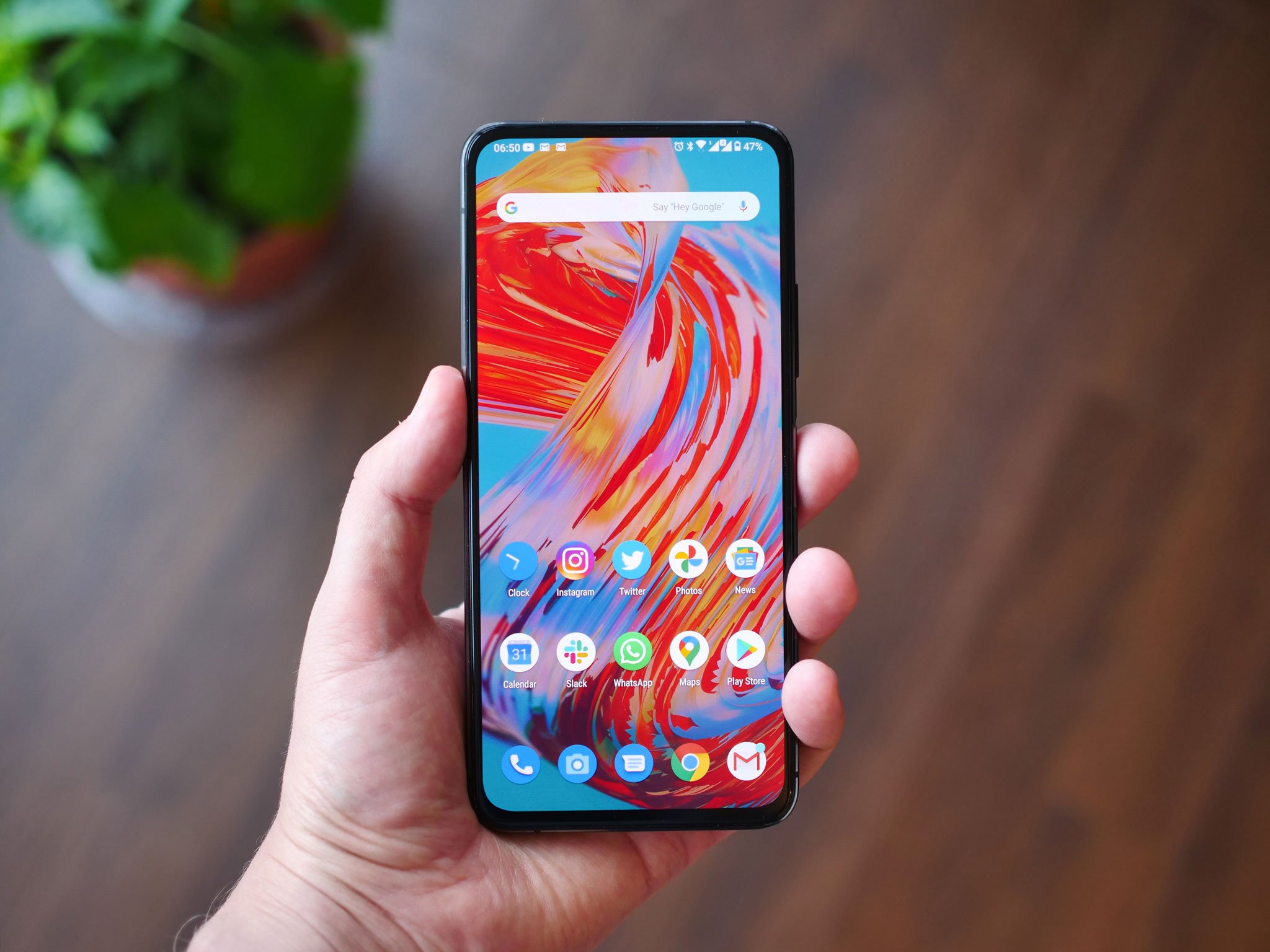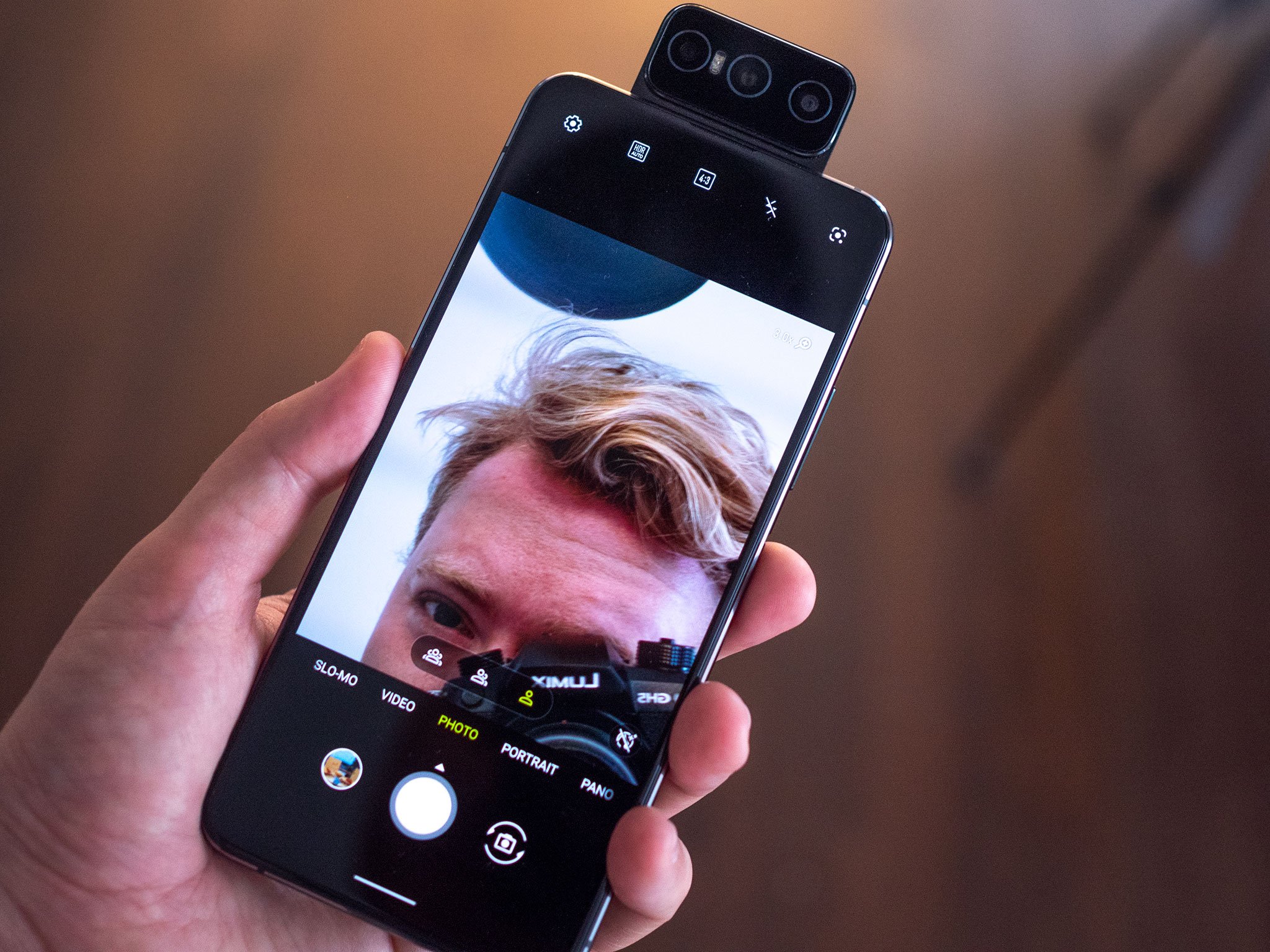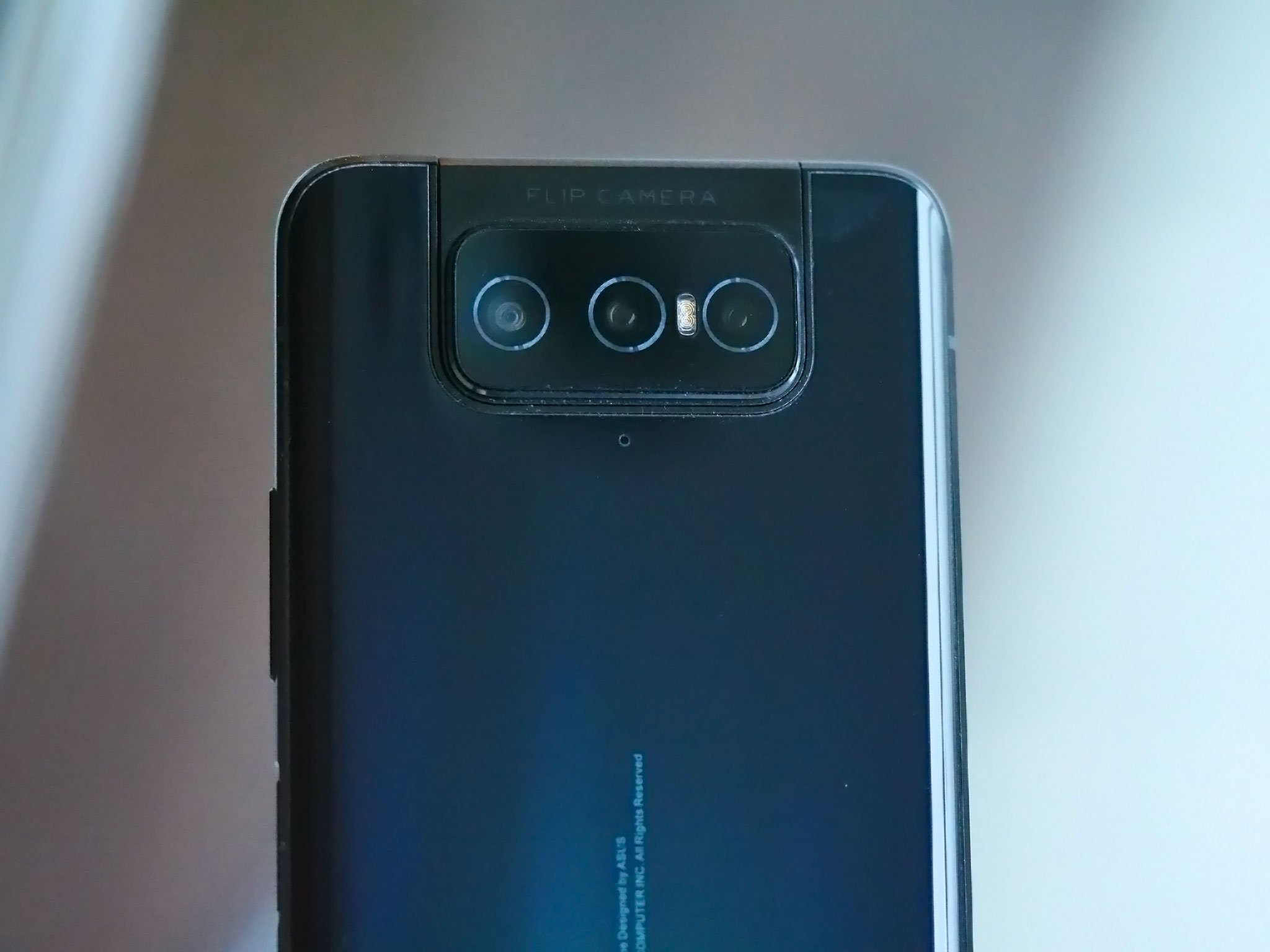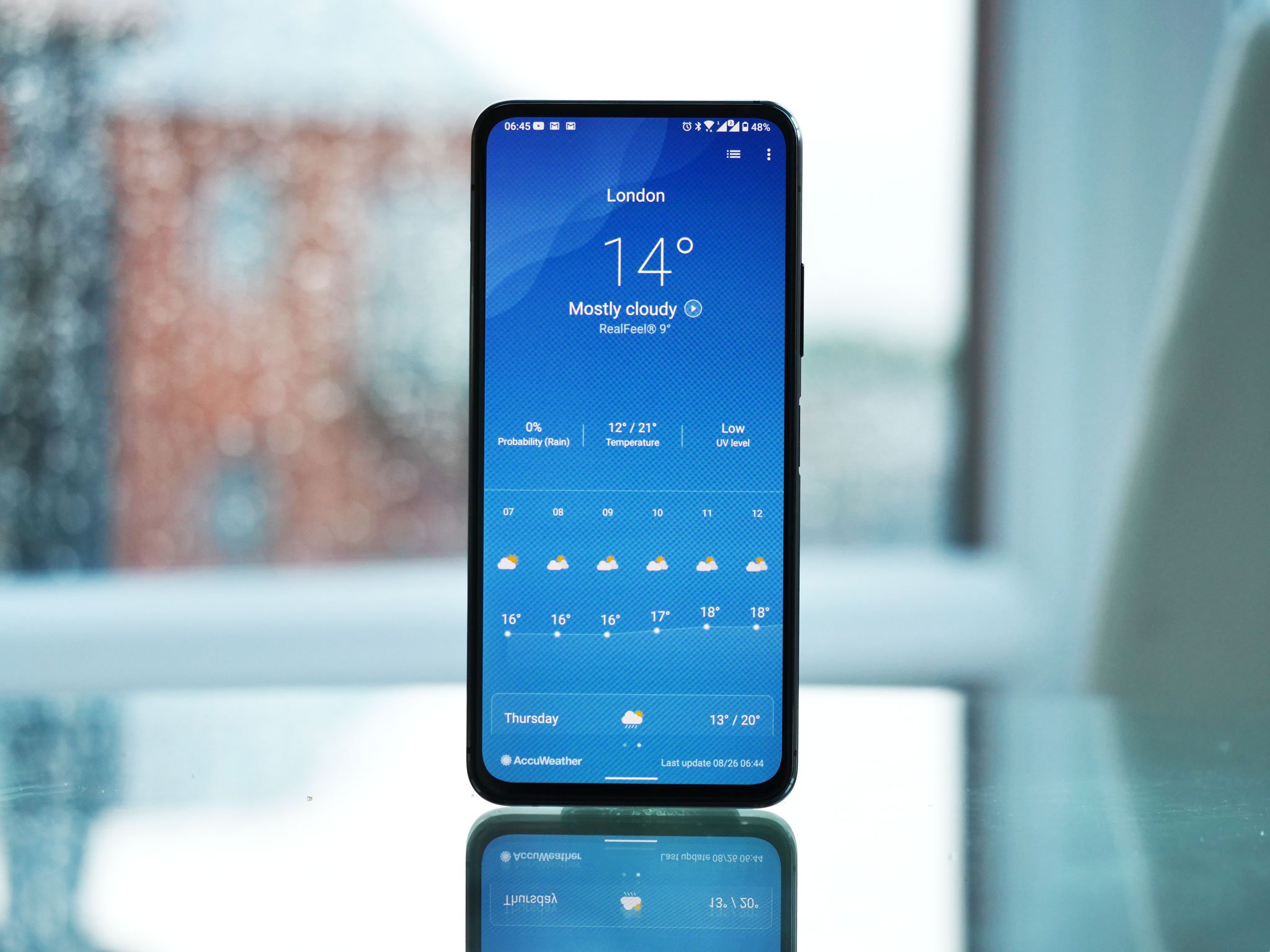New ASUS flagship promises borderless display, giant battery, and unmatched selfies.
ASUS's ZenFone 6 was one of the sleeper hits of 2019, with a unique flip camera design allowing for a notch-less display and superior selfies. Today, the Taiwanese company launches its successor, the ZenFone 7 Pro. As the name suggests, ASUS is aiming a little higher with its flagship phone this year, with a more competitive feature set and significant upgrades to that rotating camera setup.
There is also a regular ZenFone 7, with somewhat lower specs. But we've been using the higher-end Pro version, which is by far the more interesting of the two.
The basic look and feel of the ZenFone 7 Pro isn't dramatically changed compared to either the ZenFone 6 or its close cousin, the ROG Phone 3. It's still a pretty chunky phone, and the painted metal sidewalls and chamfers give it a slightly industrial look. The broad curve of the glass back panel can occasionally make for a slightly slippery feel, but at least the glass itself has a more ostentatious look this time around, with an iridescent turquoise effect as it's tilted through the light.
While the ZenFone 7 Pro is easier to handle than the ROG Phone 3, with its mammoth battery and high-tech cooling apparatus, this is most certainly not a svelte handset. With its 6.67-inch display and generous proportions, this looks (and feels) like a big phone.
That space (and weight) is put to good use, though. ASUS has maintained the same generous 5,000mAh battery capacity from last year's model, while boosting charging speeds up to 30W via Quick Charge 4 or USB-PD. (There's no wireless charging still, sadly.)
And around the back, the flippable camera module has seen improvements across the board. There's a redesigned motor allowing for smoother motion, which is rated at up to 200,000 rotations, or more than 100 flips per day for five years. (That's double the 100,000 rotations for which the ZenFone 6 was rated.)
The cameras themselves are also all-new: The main shooter uses Sony's 64MP IMX686 sensor, a 1/1.73-inch unit behind an f/1.8 lens with optical stabilization (previously seen in the ROG Phone 3, but that phone lacked OIS). The 8MP 3X telephoto, a new addition, is also optically stabilized. And the f/2.2 ultrawide camera uses Sony's IMX363 — otherwise known as the main sensor from the Google Pixel 4 series, though with only electronic stabilization. Camera comparisons will have to wait until our full review, but that's a pretty beefy upgrade from last year, and on paper, should give devices like the OnePlus 8 Pro a run for their money.
The ZenFone's killer app is still its flip camera — and it's packing some serious upgrades.
The key advantage of the flip camera is all three of these — yep, even the telephoto for some reason — can be repurposed for selfie duty. A tap on the camera-switching button rotates the module around 180 degrees, allowing for higher-quality selfies than you'd get from just about any traditional front-facing camera, especially in darker conditions.
The wide-angle camera is especially versatile, letting you fit a bigger group of people into your shot. (Or, perhaps more likely these days, one or two people and a lot more scenery.) All three sensors feature autofocus (obviously), so it's easier to avoid the slightly-out-of-focus phenomenon that sometimes afflicts fixed-focus selfie cameras.
And in a very welcome software improvement, it's now possible to program preset camera positions for the flip camera's motor, so you can easily switch to positions in between rear-facing and front-facing. A 90-degree rotation, for instance, is great for capturing pets or wildlife at a lower level without crouching down too low. Up to three presets are supported, and these will also show up in third-party camera apps thanks to the optional floating motor control button.
There's one significant compromise that remains because of that flip camera, though: The ZenFone 7 Pro isn't water-resistant and has no IP rating. There's no gasket around the SIM tray either, so you'll want to be careful around water with this phone.
ASUS ZenFone 7 Pro Specs
| Category | Features |
|---|---|
| Display | 6.67-inch Full HD+ AMOLED all-screen display, 92% screen-to-body ratio, 20:9 aspect ratio, 90Hz refresh rate, 1ms response time, 200Hz touch sampling rate, 110% DCI-P3 color space, Delta E<1 color accuracy |
| CPU | Qualcomm Snapdragon 865+ 5G Mobile Platform |
| GPU | Qualcomm Adreno 650 |
| RAM/ROM | LPDDR5 8GB RAM, UFS 3.1 256GB |
| Wide Camera | 64MP Sony IMX686 flagship sensor, Quad Bayer Technology, F1.8, 0.8/1.6-micron effective pixel size, 1/1.73" 2x1 OCL PDAF, OIS, Dual LED Flash |
| Ultrawide Camera | 12MP Sony IMX363 flagship sensor, 113-degree ultrawide F2.2 DualPDAF front and rear realtime distortion correction. |
| Telephoto Camera | 3X optical zoom, up to 12X total zoom, OIS, supports seamless transitions between cameras while recording |
| Video recording | Up to 8K@30fps with EIS for main camera Up to 4K@60fps for secondary camera |
| Battery | 5,000mAh, Quick Charge 4.0 |
| Wireless | WiFi 6, Bluetooth 5.1, Qualcomm aptX Adaptive, Wi-Fi Direct, NFC |
| SIM/SD slots | Triple slots, 5G+4G or 4G dual-SIM / dual-standby support Slot 1: 5G/4G/3G/2G Nano SIM Card Slot 2: 5G/4G/3G/2G Nano SIM Card Slot 3: Supports up to 2TB microSD card |
| OS | Android 10 |
| NFC | Available |
| Audio | Dual speakers with dual smart amplifiers NXP TFA9874 smart amplifier Triple microphones with ASUS noise reduction technology |
| Color | Aurora Black, Pastel White |
| Dimensions | 165 x 77.28 x 9.9 mm |
| Weight | 230g |
In most other respects, the ZenFone 7 Pro delivers everything you'd expect from a 2020 flagship. The display, thankfully, has been upgraded beyond the lackluster LCD of last year's ZenFone, and now features a far superior Full HD+ 90Hz AMOLED panel. It's a flat display and packs a slightly bigger chin than some contemporaries, but the uninterrupted screen space is definitely welcome. The 90Hz refresh rate is lower than the 120Hz of rivals like the OnePlus 8 Pro.
But the difference in smoothness is barely noticeable, and the benefits when combined with the ZenFone's huge battery should be worthwhile. The phone still manages a 200Hz touch response rate, and as a result, feels as slick and responsive as any other Android flagship.
On the inside, Qualcomm's very latest Snapdragon 865+ chipset powers the ZenFone 7 Pro, paired with an ample 8GB of RAM and 256GB of storage. MicroSD expansion is supported too, and thanks to the triple-slot SIM tray, it's possible to use an SD card and two SIMs at the same time.
Flagship hardware with very few compromises, paired with clean software.
Unfortunately for fans of the 3.5mm headphone jack, though, the legacy audio port has been retired in the ZenFone 7 Pro, so you'll need to go wireless or dig out some USB-C buds.
The capacitive fingerprint scanner is now built into the power button on the side of the device and works far more reliably than, for example, Sony's lackluster side-mounted sensor on its Xperia 1 II. And the key itself can now be programmed to launch apps or perform other functions with a long press or double-tap.
That's one of the many tweaks included in ASUS's ZenUI software. ZenUI underwent a major overhaul last year, as part of a shift towards a more stock Android interface. That stock look and feel hasn't gone anywhere, but ASUS has added more helpful features to its loadout in this latest release.
An optional longer layout for the quick settings area of the notification shade allows you to see more icons at once, and reach them more easily with one hand. The sound menu has been redesigned to allow easier access to volume controls for calls and alarms as well as media. And all the battery health software features we first saw on the ROG Phone 3 are present, including the ability to schedule slower charging times overnight to improve long-term battery health.
Meanwhile, the move to an AMOLED display has made Alway-On Display features possible, and this functions much the same as on a Google Pixel phone, with a handful of clock designs and notifications able to partially wake the screen. Google's Android Messages app is the bundled text messenger, and the phone also supports the Google Phone app if downloaded from Google Play — useful if you want Google's caller ID and spam detection features.
So anyone put off by the design direction of, for example, the next OxygenOS release, should appreciate that ASUS's software is pretty much as clean as a Pixel these days.
The only caveat on software is that this phone is launching on Android 10 just days before the expected Android 11 stable release. ASUS isn't committing to any firm date for the update though a beta will soon be rolling out for ZenFone 6 owners. (For what it's worth, stable Android 10 for the ZenFone 6 landed around December last year.)
Overall, the ASUS ZenFone 7 Pro looks to be a solid upgrade to the dramatically different ZenFone 6. The improvements are mainly incremental, but targeted in the areas that make the most sense — particularly the cameras, which we'll dissect in further detail in our full review. Other improvements like the 90Hz display, 5G connectivity, and faster charging make the ZenFone more competitive in the crowded Android flagship space.
If ASUS can hit the right price point in the West, it could have a tempting proposition for photo enthusiasts, selfie fans, and anyone who appreciates a clean, fast Android experience.




Tidak ada komentar:
Posting Komentar